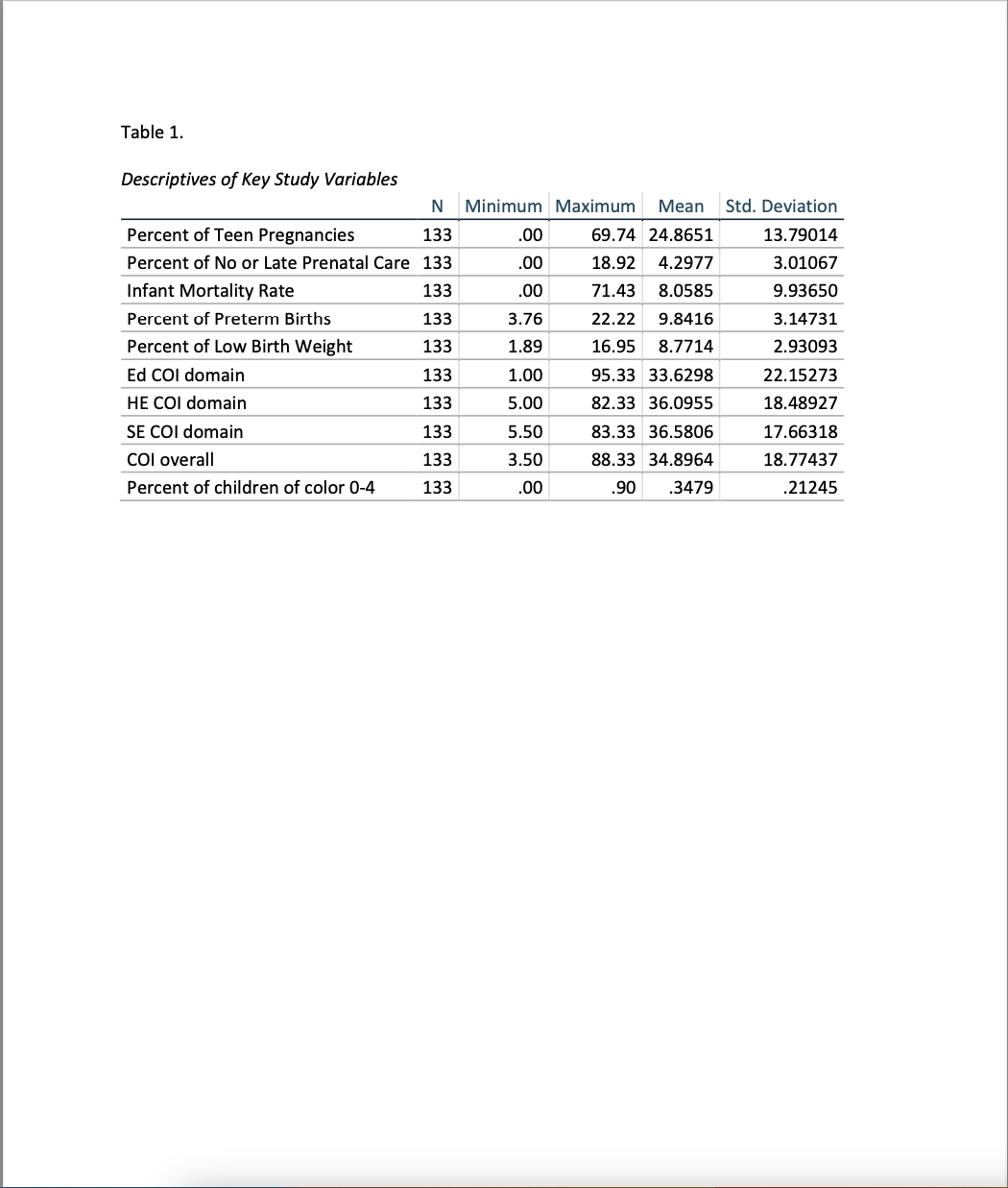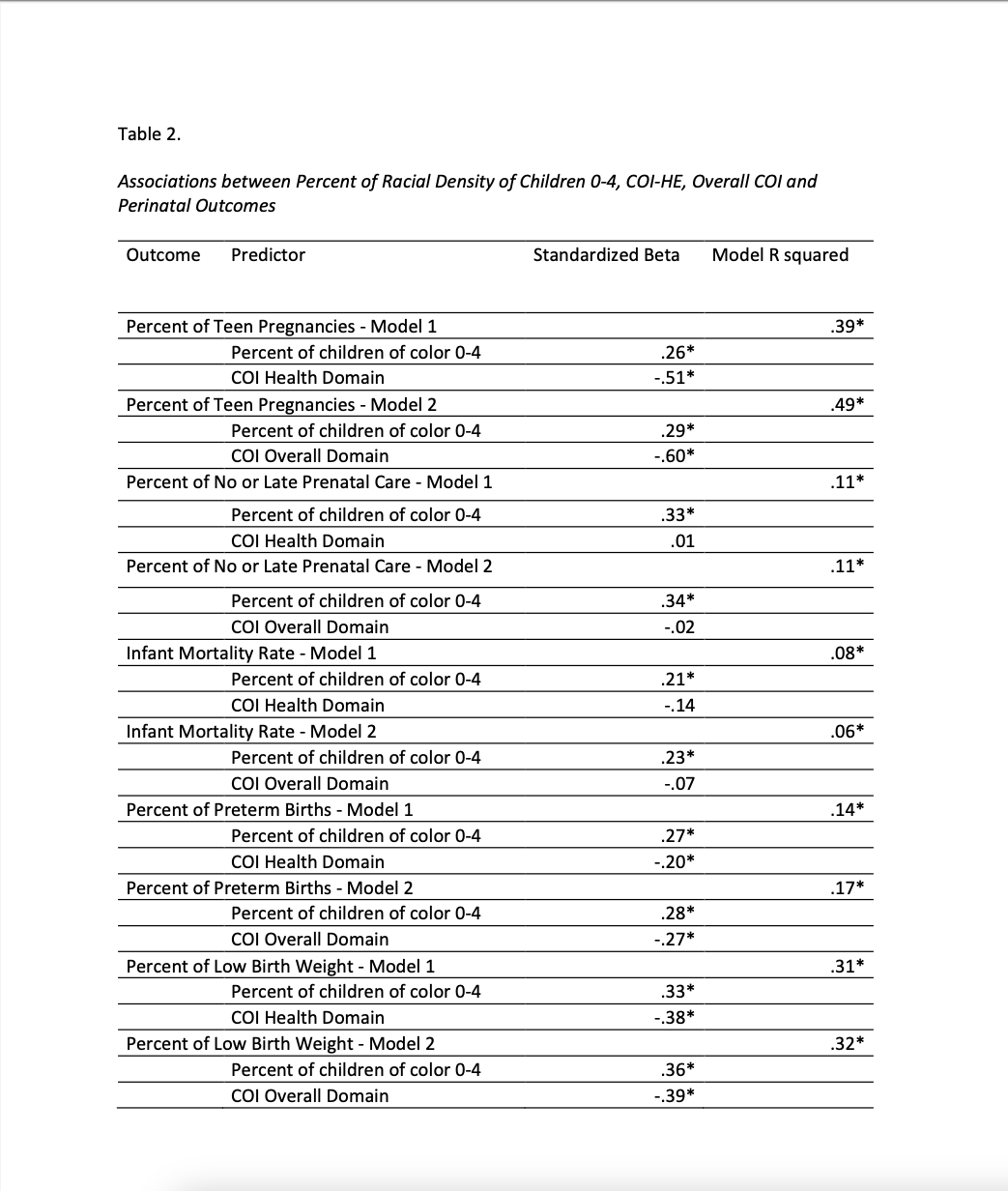Neonatology
Session: Neo-Perinatal Health Care Delivery 3: Epidemiology/Health Services Research
255 - An Examination of Community-Level Resources and Racial Density in Relation to Perinatal Outcomes in Virginia
Sunday, May 5, 2024
3:30 PM - 6:00 PM ET
Poster Number: 255
Publication Number: 255.2289
Publication Number: 255.2289

Jennifer LoCasale-Crouch, PhD (she/her/hers)
Associate Professor
Virginia Commonwealth University
Charlottesville, Virginia, United States
Presenting Author(s)
Background: US perinatal outcomes such as infant mortality and preterm birth are significantly higher than comparative wealthy nations with racial disparities evident. Poor perinatal outcomes contribute to lower life expectancies, with those who survive experiencing long-term health challenges. Previous research explaining racial differences in perinatal outcomes has focused on individual contributing factors such as maternal health and socio-economic status. Although community factors are recognized as robust predictors of health throughout the lifespan, little work has examined their role in perinatal outcomes. Given that health inequities emerge early, communities represent a potentially important but underexplored feature of what shapes perinatal outcomes.
Objective: The purpose of this study is to explore the association of community-level resources and racial density with perinatal outcomes in Virginia.
Design/Methods: Utilizing geo-spatial analytic techniques, we combined the 2017 publicly available perinatal health data from the Virginia Department of Health (VDH) with the Child Opportunity Index (COI) 2.0, a census tract measure of community resources, conditions and opportunities related to children’s health and also includes race/ethnicity data of children 0-4 years old. COI data were aggregated to the 133 counties/localities defined by VDH and then datasets were merged.
Results: Multivariate regression models were run to examine the contribution of community-level resources and racial density of young children with perinatal outcomes, including teen pregnancies, late/no prenatal care, infant mortality rate, percent of preterm birth rate and percent of low-birth weight. Model 1 used the COI Health and Environment (HE) domain and model 2 used the overall COI. Table 1 indicates that each model was significant. Utilizing the overall COI rather than the COI-HE domain alone explained more variance in birth outcomes. When included together, racial density was always significant and COI’s associated strength with outcomes varied.
Conclusion(s): Findings suggest that communities play a significant role in perinatal outcomes and may potentially explain some of the racial disparities observed. Thus, health outcomes previously associated with individual characteristics are also connected to the environment within which they occur. Understanding how community experiences intersect with individual characteristics to contribute to health inequity, then, requires a more complex and nuanced examination of the multiple systems and contextual factors at play.


